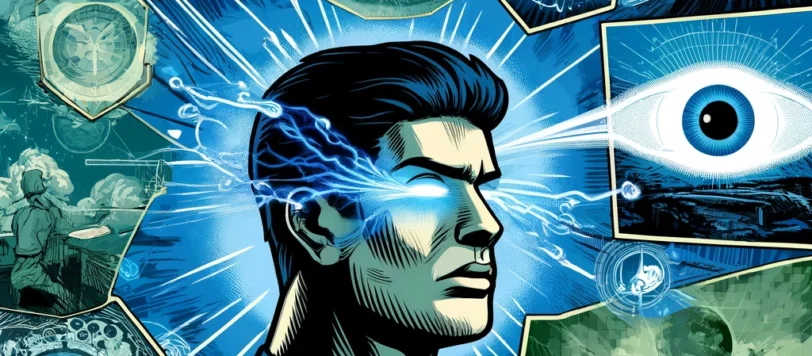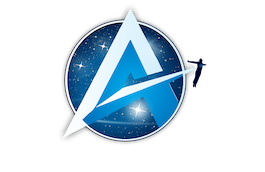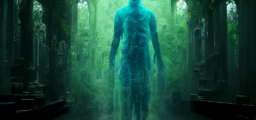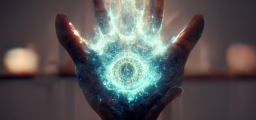Remote Viewing: A Multifaceted Tool for the Modern World

The concept of remote viewing, which allows individuals to perceive distant or unseen targets through extrasensory perception, has transcended its origins in military intelligence to become a versatile tool with potential applications across various sectors of society. This essay delves into the extensive possibilities that remote viewing presents, exploring its implications for national security, disaster response, archaeological exploration, health and wellness, financial markets, environmental conservation, and creative endeavors. Moreover, it examines the ethical considerations and practical challenges that accompany the broader adoption of remote viewing.
From Espionage to Enhancing Global Security
Initially utilized by intelligence agencies for espionage, remote viewing’s potential utility in national security remains significant. Its application could extend to identifying cybersecurity threats, foreseeing terrorist activities, and combating international smuggling by providing detailed insights and foresight into potential threats. This preemptive capability could fundamentally change how global security agencies predict and neutralize threats, ensuring a higher degree of preparedness against unforeseen dangers.
Disaster Response and Management
Remote viewing’s role in disaster response could revolutionize how we prepare for and react to natural catastrophes. By identifying high-risk areas before disasters strike, remote viewing can aid in developing more effective evacuation and response strategies. In the aftermath of a disaster, it can facilitate the rapid assessment of damage and help locate survivors, significantly aiding in rescue and recovery operations.
Unearthing the Past Through Archaeological Discovery
The field of archaeology stands to benefit immensely from remote viewing. It offers the tantalizing possibility of discovering lost civilizations, unearthing hidden artifacts, and revealing previously unknown historical sites without the extensive time and resources typically required for traditional archaeological methods. This could lead to groundbreaking discoveries that provide new insights into human history and culture.
Medical Diagnostics and the Pathway to Healing
In healthcare, remote viewing could complement traditional diagnostic tools by providing detailed insights into a patient’s condition that are not readily apparent through conventional means. Additionally, its potential role in holistic healing practices, by exploring the mind-body connection, suggests new pathways for treatment and wellness that incorporate the full spectrum of human consciousness.
Shaping Financial Markets and Business Strategies
The financial and business sectors could also harness remote viewing for strategic advantages. By predicting market trends and identifying forthcoming economic opportunities, businesses and investors could make more informed decisions, potentially leading to significant gains. However, the ethical implications of such uses warrant careful consideration and transparency.
Promoting Environmental Conservation
Environmental conservation efforts could be enhanced through remote viewing by allowing for the remote detection of endangered ecosystems, pollution sources, and illegal activities like deforestation and poaching. This capability could become a powerful tool in the fight against environmental degradation and climate change, offering a unique perspective on the planet’s health and the impact of human activities.
Enhancing Creativity and Cultural Insights
Beyond its practical applications, remote viewing can serve as a profound educational and creative tool. It has the potential to expand our understanding of consciousness, inspire creativity across various disciplines, and promote cultural enrichment. By pushing the boundaries of imagination and exploration, remote viewing can contribute to a richer, more diverse intellectual and artistic landscape.
Navigating the Future: Ethical Considerations and Challenges
The expansion of remote viewing into various sectors of society raises important ethical questions and practical challenges. Developing standards for the accurate and ethical use of remote viewing is crucial for its integration into mainstream applications. Continuous research, interdisciplinary collaboration, and dialogue among practitioners, scholars, and policymakers will be essential to navigate these challenges effectively.
In conclusion, the multifaceted applications of remote viewing have the potential to significantly impact many areas of modern life. From improving national security and disaster response to pioneering medical diagnostics and enriching creative endeavors, remote viewing offers a unique tool for exploration and innovation. However, realizing its full potential requires a thoughtful approach that considers ethical implications, strives for accuracy and reliability, and embraces the collaborative effort to explore the unknown. As we continue to uncover the capabilities of remote viewing, we are reminded of the vast untapped potential of human consciousness and the endless possibilities that lie ahead.
Enhancing Disaster Preparedness and Response
In the realm of disaster response, the potential of remote viewing extends beyond immediate rescue operations to encompass disaster preparedness and risk assessment. Remote viewers could potentially identify areas at high risk for natural disasters, such as earthquakes or volcanic eruptions, before they occur, enabling preemptive evacuation plans and minimizing human and material loss. In post-disaster scenarios, the ability to remotely assess the condition of critical infrastructure could expedite recovery efforts, ensuring a swift return to normalcy for affected populations.
Revolutionizing Archaeological Discoveries
The application of remote viewing in archaeology promises a paradigm shift in how ancient mysteries are unraveled. Imagine the possibility of locating the burial sites of historical figures, uncovering the lost libraries of antiquity, or revealing hidden chambers within known archaeological sites. Remote viewing could complement technological advancements such as satellite imagery and ground-penetrating radar, offering new clues that lead to extraordinary discoveries and rewriting chapters of human history.
Pioneering Advances in Medical Diagnostics and Healing
The intersection of remote viewing and health presents groundbreaking possibilities for medical diagnostics and holistic healing. Skilled remote viewers could work alongside medical professionals to identify the root causes of illnesses or provide insights into complex medical conditions that elude conventional diagnostic methods. Moreover, the integration of remote viewing into holistic healing practices could offer patients alternative pathways to wellness, exploring the mind-body connection and the power of consciousness in the healing process.
Influencing Financial Markets and Strategic Business Planning
In the volatile world of finance and business, the strategic application of remote viewing could offer a distinct competitive advantage. By forecasting economic trends, identifying emerging market opportunities, or predicting the outcomes of key business decisions, companies could navigate the complexities of the global market with greater confidence. However, the ethical implications and the necessity for transparency in such applications cannot be overstated, requiring careful consideration and responsible deployment.
Advancing Environmental Conservation Efforts
Remote viewing holds transformative potential for environmental conservation, enabling the identification of endangered species, the detection of ecological changes, and the monitoring of environmental threats from a distance. By providing a unique vantage point on the health of our planet, remote viewing could bolster global efforts to combat climate change, preserve biodiversity, and promote sustainable development practices.
Fostering Creativity, Education, and Cultural Enrichment
The implications of remote viewing for creativity, education, and cultural enrichment are boundless. In educational settings, remote viewing can serve as a tool to enhance learning, promote critical thinking, and expand students’ understanding of the potential of human consciousness. Creative professionals, from writers to artists, can draw upon remote viewing to explore new dimensions of inspiration, pushing the boundaries of imagination and artistic expression.
Navigating Ethical and Practical Challenges
As we contemplate the expansive applications of remote viewing, the importance of ethical considerations and the establishment of rigorous standards becomes paramount. The development of protocols to ensure the accuracy, reliability, and ethical use of remote viewing is essential for its acceptance and integration into mainstream applications. Furthermore, ongoing research and dialogue among practitioners, scholars, and policymakers will be crucial in navigating the practical challenges and maximizing the potential benefits of remote viewing for society.
The journey of remote viewing from a covert intelligence tool to a multifaceted resource highlights its potential to impact various aspects of contemporary life positively. As we continue to explore and harness the capabilities of remote viewing, we are invited to reimagine the limits of human potential and the ways in which we interact with the world around us. The future of remote viewing, rich with possibility, calls for a collaborative, ethical, and open-minded approach to unlock its full potential and contribute to the betterment of society.





Comments are closed.